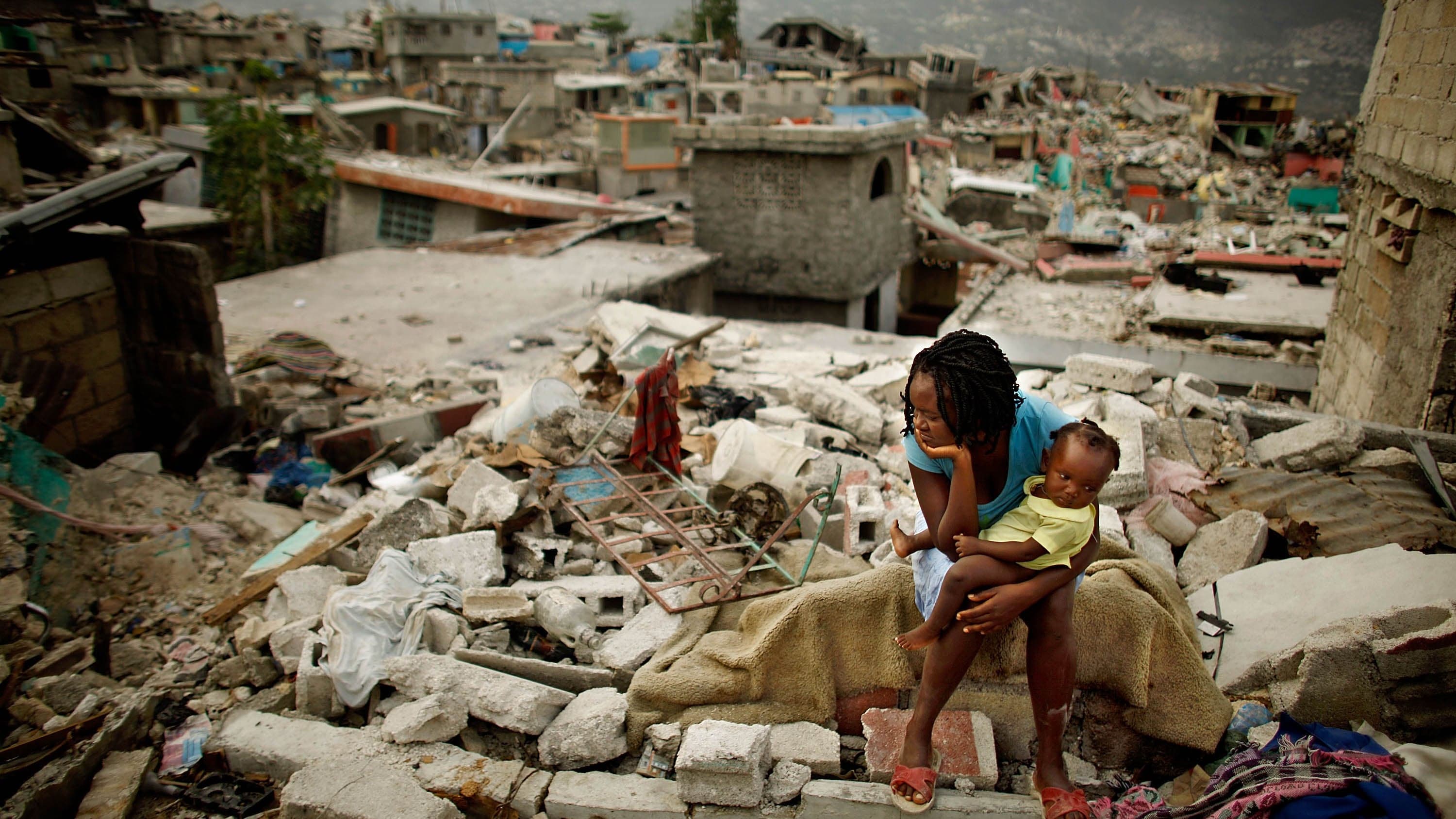On January 12, 2010, Haiti is devastated by a massive earthquake. It drew an outpouring of support from around the globe but the small nation has yet to fully recover.
Haiti has a history of seismic activity—devastating earthquakes were recorded there in 1751, 1770, 1842 and 1946. The island of Hispaniola, which Haiti shares with the Dominican Republic, lies mostly between two large tectonic plates, the North American and the Caribbean. The Haitian capital of Port-au-Prince practically straddles this fault line. Despite this knowledge and warnings from seismologists that another earthquake was likely in the near future, the country's poverty meant that infrastructure and emergency services were not prepared to handle the effects of a natural disaster.
The 2010 earthquake struck just before 5 pm. The tremor was felt as far away as Cuba and Venezuela, but the epicenter of the 7.0-magnitude quake was just 16 miles away from Port-au-Prince. Eight aftershocks followed the same day, and at least 52 were recorded over the next two weeks. The effects were catastrophic. All of the capital’s hospitals, as well as three facilities run by Doctors Without Borders, sustained serious damage, as did Port-au-Prince's airport and its seaport, which was rendered inoperable. Telecoms services were greatly affected, major roads were rendered impassible, and close to 300,000 buildings, most of which were residences, were damaged beyond repair. The National Assembly building and Port-au-Prince Cathedral were also destroyed.
The human toll was horrific and remains incalculable. Some estimates put the number of deaths around 40-50,000, while the Haitian government estimated that over 316,000 died, but all authorities acknowledge that the death toll is impossible to truly count. Something approaching 1 million people were displaced.
News and images of the quake, including photos of the heavily-damaged National Palace, quickly activated a massive humanitarian response. The Dominican Republic and Dominican Red Cross responded immediately with emergency supplies and airlifts to Dominican hospitals. Nations from every continent contributed money, supplies, and manpower. Port-au-Prince's airport operated around the clock but could not accommodate all the arrivals. Foreign air forces, including those of the United States and Great Britain, airlifted survivors to hospital ships off the coast, and some supplies were dropped to the island by parachute. The "Hope for Haiti" telethon on January 22nd broke records by raising $58 million in one day.
Though the humanitarian response was immediate and overwhelming, Haiti's crippled infrastructure made the delivery of aid difficult. The situation was still classified as an emergency six months after the earthquake. A million people on the island lived in tents, and a cholera epidemic that began in October claimed over 3,300 more lives. Whether or not Haiti has yet fully recovered is a matter of debate, but the effects of the earthquake were palpable for the next decade.

